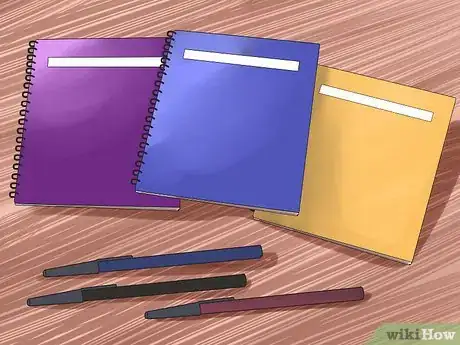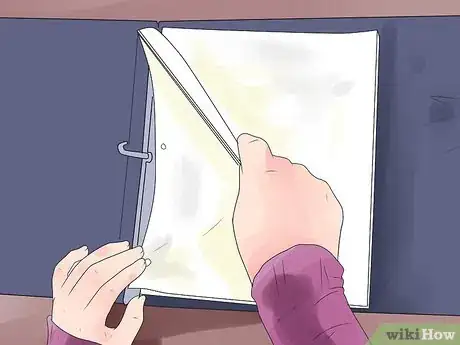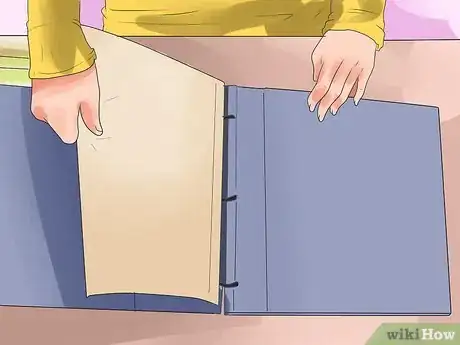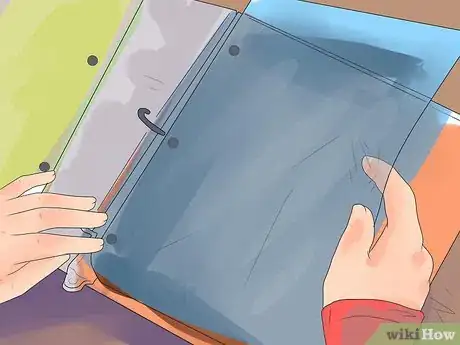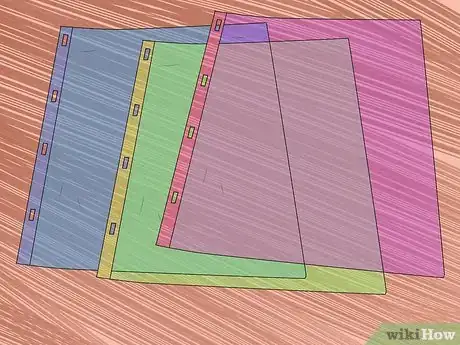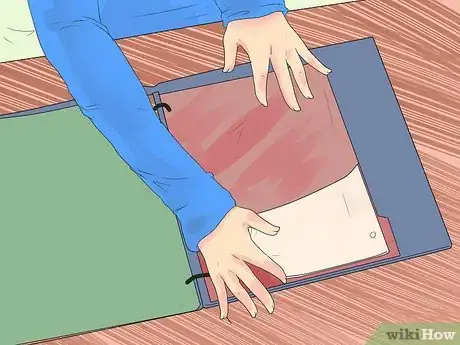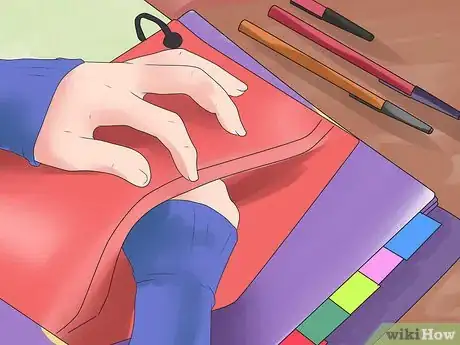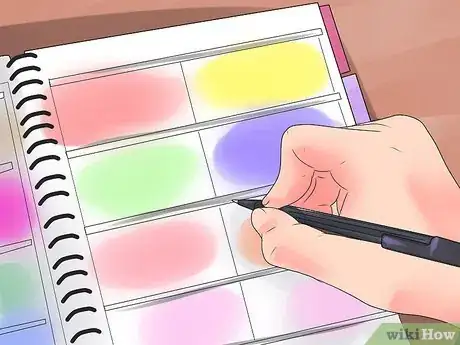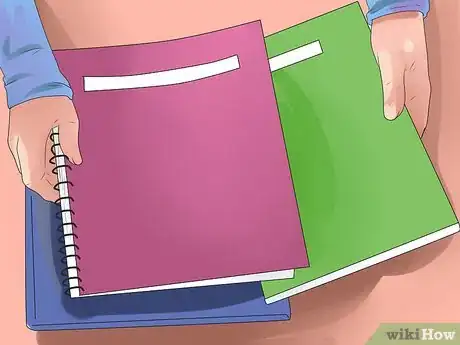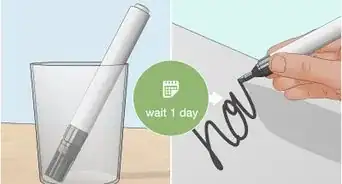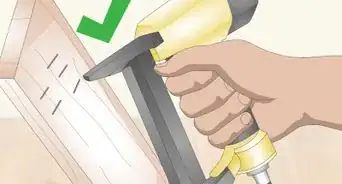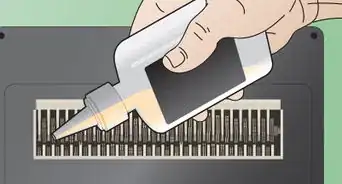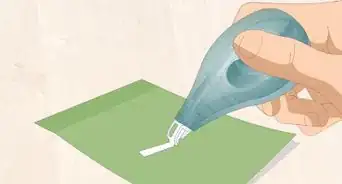This article was co-authored by David Jia. David Jia is an Academic Tutor and the Founder of LA Math Tutoring, a private tutoring company based in Los Angeles, California. With over 10 years of teaching experience, David works with students of all ages and grades in various subjects, as well as college admissions counseling and test preparation for the SAT, ACT, ISEE, and more. After attaining a perfect 800 math score and a 690 English score on the SAT, David was awarded the Dickinson Scholarship from the University of Miami, where he graduated with a Bachelor’s degree in Business Administration. Additionally, David has worked as an instructor for online videos for textbook companies such as Larson Texts, Big Ideas Learning, and Big Ideas Math.
wikiHow marks an article as reader-approved once it receives enough positive feedback. This article received 15 testimonials and 80% of readers who voted found it helpful, earning it our reader-approved status.
This article has been viewed 131,224 times.
If you're a middle school student, you know how easy it is to lose track of a handout or homework assignment. Follow these instructions to organize them by class, so you never have to flip through dozens of unsorted papers again. If you can fit all your papers into one or two binders, it will be harder to forget a notebook.
Steps
Organizing a Binder
-
1Sort your papers by class. If your binder or notebooks are full of notes from different classes, in no particular order, start by arranging them into separate piles. Arrange these piles in a row according to the order you attend those classes.
-
2Go through each stack and remove old papers. Remove graded work and old assignment instructions, and store them in a separate binder or folder to leave at home and help you study for tests. Set aside classwork from previous years, returned projects, and non-school-related papers. Save any of these that you think will be useful for studying, along with any projects you or your parents want to keep for your own enjoyment. Throw away the rest.
- Keep the "at home" binder or folders in an obvious place where they won't get lost in clutter, such as on a bookshelf in your room.
Advertisement -
3See if you can fit the remaining papers into one binder. Having just one binder for all your classes can be great for keeping yourself organized, since you don't have to keep track of a separate notebook for each class.[1] If you have a giant stack of papers, try to separate them into two binders using one of these systems:
- Try using one binder for classes before lunch, and one binder for classes after lunch. If you have a locker at your school, you only need to carry one of these around at a time, but remember to pick up both before you leave for the day.[2]
- If your school has Monday-Wednesday-Friday classes and Tuesday-Thursday classes, separate your papers into two binders so you only need to take one binder to school each day. Remember to put the right binder in your backpack the night before each school day.
-
4Insert a colored divider into your binder for each class. Dividers are just a colored sheet of paper, usually with a small tab where you can write the name of a class. Put colored dividers into the binder in the order your classes happen. For instance, if your first class is math and your second is English, put a blue divider labeled "Math" at the front of your binder, followed by a red divider labeled "English."
-
5Insert a three-hole folder into each class section. Two-pocket folders are a great tool to have, since they let you put in and take out papers without having to open and close the binder rings.[3] Don't use this for all papers. It's best for handouts or homework assignments that are due in the next day or two, since they won't be staying in the binder for long.
-
6Use a plastic sleeve to protect important papers. Most classes have a syllabus, assignment list, or other papers that you need to look at throughout the semester. For each class, find a plastic sleeve or "sheet" protector with three holes and put it in the binder after the folder for that class. Keep each important paper in a separate sleeve to protect it from tearing.
-
7Organize your other papers to see if you need white dividers. Before you put the rest of the papers in your binder, organize the papers from each class from oldest to newest. If you have more than fifteen papers in the stack, use white paper dividers to organize them into categories. These are blank sheets with tabs, just like the colored plastic dividers you already have in there, but the different look should make it obvious that they divide papers within one class, instead of dividing multiple classes. Here are some examples of how you could divide papers from one class into multiple sections:
- For almost any class, you could use three white paper dividers labeled "Handouts," "Homework," and "Notes."
- If a teacher gives you tests on specific topics, organize your class material by those topics to make studying easier. For instance, label your English class dividers "Reading Assignments" and "Vocabulary."
-
8Put in the rest of your papers. Once you've decided how to sort your papers, put each paper after the colored divider for its class, and after the white divider for its category if you are using those. Sort your papers in each section from earliest to latest, to make them easier to find.
-
9Add lined paper for taking notes. Put in about ten to twenty sheets of lined paper for each class. You'll almost certainly need more than this during the semester, but you don't need to add it all now. Keeping less paper in your binder makes it easier to find specific notes, and reduces the weight you need to carry around every day.
- Add graph paper for your math or science classes if your teacher requests it.
Staying Organized
-
1Organize your binder each night before class. Pick a time each day to go through your backpack and sort your papers and other supplies. Move graded work and old handouts to a folder you keep at home, so you can use them to study later. Check that all your homework assignments are packed into the right folder in your binder.
- Some people remember to do this more often if they organize their binder right after they get home. Waiting too long can make you unwilling to return to "school mode."
-
2Use a planner. A daily planner or portable calendar makes keeping track of assignments much easier, as well as of upcoming quizzes, tests, exams, and project due dates. Many people write down each assignment in the space provided for the day it is due. If you keep forgetting to look ahead at your assignment, however, you can try a different system that keeps all your current assignments in the same place:[4]
- Each time you are given a new assignment, write it down in your planner in the space for today' date. Write the due date next to the name of the assignment.
- Each evening after school, look at your planner's entry for yesterday's date. Cross out any assignments you've completed, then re-write the names of all uncompleted assignments in today's date.
- Instead of a paper calendar or agenda book, you can use an application, such as Google Calendar. Choose whatever works better for you.
-
3Keep supplies left at home in a special place. Notebooks, binders, and returned assignments can easily get lost in a pile of clutter when you leave them at home. Prevent this by clearing space on a bookshelf or drawer, and always keep your notebooks in the same place. Put all papers left at home in a special folder for that class, separate from the one in your binder.
-
4Color code your other supplies to match your binder. Ideally, you won't need extra notebooks, but some teachers will require you to use them. If they do, make it easy to remember which is which by keeping them color coded. For example, if you keep your math papers after a blue divider in your binder, use a blue notebook and supply case for your math class.[5]
Community Q&A
-
QuestionWhat do I do if I have a lot of papers in my binder? Where do I put them?
 Community AnswerTry using folders and envelopes for your papers. Folders can maximize space, and envelopes are great for smaller papers that don’t fit in the binder.
Community AnswerTry using folders and envelopes for your papers. Folders can maximize space, and envelopes are great for smaller papers that don’t fit in the binder. -
QuestionIs a mechanical pen good for normal writing?
 Community AnswerSure, as long as it feels comfortable in your hand, that's fine. Test it out at home before bringing it to school to make sure you like it. Don't forget that you'll need a steady supply of lead for it.
Community AnswerSure, as long as it feels comfortable in your hand, that's fine. Test it out at home before bringing it to school to make sure you like it. Don't forget that you'll need a steady supply of lead for it. -
QuestionDo I need two binders?
 Community AnswerIt really depends on how many papers and folders that your teachers hand out. If they hand out a lot, you may want a binder for each class, but if they rarely hand anything out it would really only be necessary to get one. 2 may work out just fine for your related classes or your before and after lunch classes. Use whatever keeps you organized and happy!
Community AnswerIt really depends on how many papers and folders that your teachers hand out. If they hand out a lot, you may want a binder for each class, but if they rarely hand anything out it would really only be necessary to get one. 2 may work out just fine for your related classes or your before and after lunch classes. Use whatever keeps you organized and happy!
Things You'll Need
- One or two three-ring binders
- One colored plastic divider for each class (different colors)
- One two-pocket three-hole folder for each class
- Plastic sleeves (one for each syllabus or similar important piece of paper)
- White paper dividers (optional, for dividing papers within the same class)
- Notebook
References
- ↑ http://www.psychologytoday.com/blog/thinking-about-kids/201201/keep-your-middle-schooler-organized
- ↑ http://www.middleschoolguide.com/wp-content/uploads/2011/05/TMSSGRW-SW-pp.-20-33-The-Binder.pdf
- ↑ http://www.middleschoolguide.com/wp-content/uploads/2011/05/TMSSGRW-SW-pp.-20-33-The-Binder.pdf
- ↑ http://www.psychologytoday.com/blog/thinking-about-kids/201201/keep-your-middle-schooler-organized
- ↑ http://www.additudemag.com/adhd/article/1038.html
About This Article
To organize your middle school binder, start by removing old papers that you don't really need anymore, like graded homework or old assignment instructions. Then, divide the rest of your papers up by class and insert colored dividers between each stack so it's easy to keep track. You can also insert a 3-hole folder for each section so you can easily slide homework assignments in and out of your binder. If you don't have a separate notebook, put a stack of lined paper in each section for taking notes in class. To learn how to keep your middle school binder organized, scroll down!
